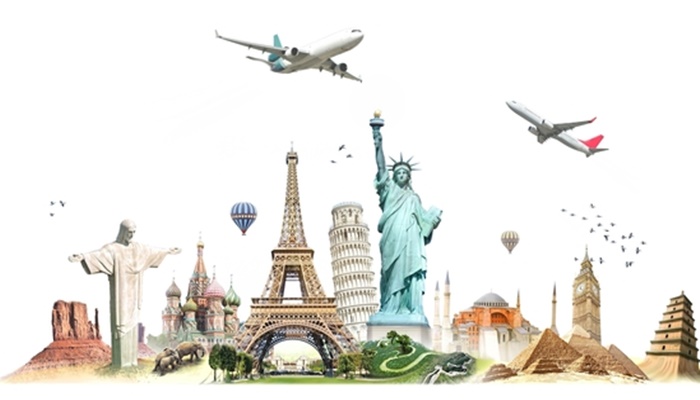A key problem for many employers when trying to tackle the widespread ‘loneliness epidemic’ described in the first article of this two-part series is that they often look in the wrong place to do so.
As a Harvard Business Review (HBR) report entitled ‘Loneliness is Reshaping Your Workplace’ points out, recent research has highlighted how:
Employers often misdiagnose the problem, focusing on personality traits or remote work rather than addressing structural and cultural drivers of dis-connection.
But if leaders are to effectively manage teams in what it describes as “an era of loneliness”, they need to focus on “two distinct but deeply interconnected layers of connection”, the study says. The first is social cohesion and belonging, and the second is building meaningful interpersonal relationships.
Social cohesion and belonging consists of the shared identity, community ritual, and inclusion practices that bring teams together. It is vital, the research says, in that:
It creates psychological safety, reduces friction, and generates a sense of collective purpose and energy. Social cohesion isn’t about uniformity but about ensuring people feel like they’re seen and their contributions are valued.
The value of meaningful inter-personal relationships
Meaningful inter-personal relationships, meanwhile, involve making the deeper, trust-based connections that go beyond employees simply performing work tasks together. Such connections are important, the report indicates, because:
When team members genuinely know and trust each other, they communicate better, solve problems faster, and are more likely to innovate together, thus making deep relationships key in combating loneliness and increasing productivity.
This contention is also borne out the KPMG Friends at Work 2.0 Survey. It reveals that most employees (57%) would work for an employer offering them a salary at 10% below the market rate if they had close friendships at work over a role with a 10% higher salary but no close friends. In other words, the study says:
Workplace friendships are valued at a 20% salary premium.
Unsurprisingly then, 87% of the 1,019 professionals questioned point out that close work friendships are very important to them. The number one reason (28%) given is that friends help boost their productivity and motivation.
They also provide valuable perspective, guidance and aid problem-solving as well as help build confidence and expand their professional skills and networks (26% respectively).
What can employers do to tackle loneliness?
So, what can employers do to facilitate these all-important feelings of belonging and the creation of meaningful inter-personal relationships? Is it enough, for example, to simply impose return-to-office mandates, as has become increasingly common these days in tech?
Amanda Okill, Principal Consultant at work behavior and culture consultancy Byrne Dean, believes not. In fact, she points out that making big policy U-turns can actively disadvantage certain demographics, such as parents and carers. Instead, she says:
Leaders have to think more holistically about how to build connection and wellbeing into the culture. It’s not just something to be left at the door of HR or line managers because if leaders don’t take it seriously, you won’t get anywhere. This means listening to your people and asking them what they’d like to see. Once you have that information, you can start thinking about what to do. And it’ll be different for each organization and sector.
What applies to all companies though, the HBR study says, is the need to embed “connection” into work processes and ritual rather than simply overlay it on existing employee schedules that many are struggling with anyway. The report suggests five ways of doing this to help “team members feel seen, supported and aligned”:
- Support team cohesion through creating shared identity
The idea here is to create a feeling of shared identity and belonging so that team members feel connected to something bigger than themselves. Doing so means they are more likely to persist with challenging tasks and support each another through tough times. Trust and discretionary effort are also boosted.
Ways of achieving this include sharing team stories, which include errors and breakthroughs. Simple rituals, such as ‘Wins and Fails Friday’ normalize self-reflection and learning from mistakes. Explaining the reasoning behind decisions also builds trust and reinforces a shared sense of direction going forward.
2. Design in collaboration to build trust
If work becomes overly transactional or focused on individual achievements, people feel less seen, supported and even resilient. Repeated interactions with others, on the other hand, generates trust.
This means leaders must treat relationship-building as an operational requirement rather than a nice-to-have and create intentional pathways to enable connection. As Emily Rose McRae, a Senior Director Analyst for Gartner’s Future of Work and Workforce Transformation team, explains:
You have to think about total wellbeing, which includes physical, social and communal. If people don’t feel camaraderie, their performance drops, but simply bringing people into the office won’t fix it. So, rather than just designing in-office time and having people sitting next to each other, you have to design for work that supports collaboration and connection.
Possible ways of doing so, according to the HBR study, include introducing buddying systems for new hires to help boost integration and engagement. Also ensure collaboration is based around structured, purpose-based activities to strengthen ties between team members, enhance information exchange and boost innovation. Rotating project teams likewise helps promote cross-functional trust rather than just efficiency.
But McRae adds that it is also essential to support in-role connectiveness – and will become increasingly so as technology, such as AI, which reduces levels of human interaction, becomes more prevalent:
With in-role connectiveness, the idea is making it easier for employees to drive connections with each other in a way that works well for them. The concept of ‘connector managers’ is key here. They ask themselves ‘how do we create a strong sense of connection among employees and what can we do to facilitate that?’ So, for example, are we designing time in the office with intentionality? Are we finding ways to pair people with teams that are upstream or downstream? Are we monitoring employee mental health and offering appropriate wellbeing support?
Employee resource groups focused on specific leisure time interests, such as hiking or knitting, can offer a good way of bringing people together here, as can providing people with paid time off to undertake voluntary work during the working week. But as McRae points out:
None of this should be forced. However, it does require the organization to know what motivates its employees. So, if the majority of the workforce is middle-aged and with families, there’ll need to be different solutions to if most people are just coming from college or university.
3. Enable psychological safety
The HBR report considers creating psychological safety crucial to combatting workplace loneliness. For leaders and managers to do so requires them to make space for brief emotional check-ins.
The idea is that if they take the time to model being open in an appropriate way, it gives others permission to follow suit. This supports mental health, reduces feelings of isolation and strengthens relationships.
But Okill also points to the importance of destigmatising storytelling and the sharing of personal information and ensuring that such activity becomes part of normal conversations. However, she adds:
Avoid making assumptions. So, for example, if someone is acting differently, don’t just assume it’s because they’re lonely as they’re working from home. Do a risk assessment and find out more by building connection with them. On the other hand, don’t just end up doing nothing at all as you feel it’s not a thing, or you’re hoping for the best and that things will sort themselves out.
4. Use systems and rituals to encourage feelings of belonging
Feelings of connection need to be reinforced systemically, particularly in distributed or hybrid working environments, if they are to become the norm. Cultural norms and organizational behavior are shaped by what is rewarded during onboarding activities, in performance reviews, and recognition programs. In other words, connection needs to be built into systems and rituals.
In this context, stay interviews at 30, 90 and 180 days can help to surface any issues or challenges early on in a new joiner’s career. Quarterly ‘culture calibrations’ are also useful to give teams time to reflect on what is working for them and what is not.
5. Set the tone as a leader by acknowledging your own need for connection
Unaddressed isolation at the top of the organization can cascade downwards. But teams are more likely to connect with each other if their leaders set the tone, naming disconnection, building peer support, and showing that it is safe to display vulnerability.
To help them address the situation, leaders may benefit from building a trusted group of peer advisors or coaches outside of their own team to build resilience and improve the quality of their decision-making.
Dr Guy Lubitsh is Professor of Leadership and Psychology at Hult Ashridge Executive Education. He also believes it is useful for leaders to ask them themselves:
How as a manager, do you make others feel lonely? Are you busy with your own agenda, or are you open to other people’s emotions and feelings? Do your behaviors match your intention because people judge us on behaviors? Also, I would like to encourage all of us to communicate more with the heart, and not just the head. So, create micro-moments of human connectivity.
My take
I agree with Okill when she says that, while there may be more awareness of the loneliness problem now than in the past, it also appears to be becoming a more pressing issue. She explains:
Over the last 10 years, there have been more people living on their own in cities, where they’re often quite disconnected from others. It’s not just in workplaces. It’s the way things are moving, not helped by a lot of fear and uncertainty. There’s an increasing polarization of views and demonization of ‘the Other’, which is making people more fearful and mistrustful of their fellow humans. So, my fear is that the situation will only continue to get worse before it gets better.
Source – https://diginomica.com/how-deal-loneliness-workplace?amp




















